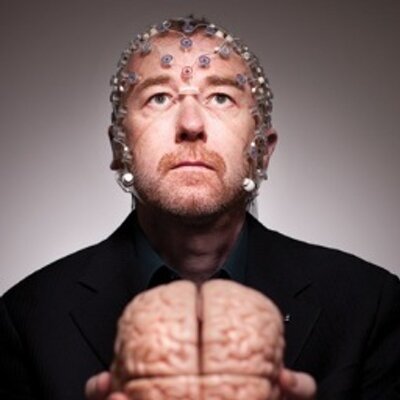INITIAL CONTACT WITH A TRAPPED BRAIN:
Until now people in a vegetative state were assumed to have no awareness at all, that was before neuroscientist Adrian Owen asked the question. "What happens to a persons awareness and can it be recovered?"
When Owen was made aware that old flame Maureen, was in a vegetative state due to a brain haemorrhage he started wondering whether she, and other people in a similar situation, might have some awareness. He was already scanning parts of the brain to study their function, so when he got the chance a year later to scan Kate, a woman in a vegetative state, he jumped at it. Kate made occasional, involuntary movements, but didn't respond to external stimuli. It was 1997, and it had always been assumed that people in this state had no conscience awareness at all. What Owen uncovered would change everything.
When posed the question: What made you scan someone in a non-responsive vegetative state?
Owen quipped: " The idea was bonkers at the time. But after what happened to Maureen it was on my radar. It seemed logical that some people might be aware, because people with locked-in syndrome- in which people can move nothing but their eyes-are cognitively fine. It seemed probable that there would also be a group of people who are conscious but couldn't even move their eyes. But there was a lot of resistance to the idea, because it makes us uncomfortable to think that a person might be completely conscious but trapped inside themselves."
How did you feel when you realised her (Kate's) brain was working?
In those days the results were a bunch of numbers - but we looked at them and went, hang on a minute, these numbers suddenly get really big. I think she's activating! It was tremendously exciting."
Was Kate conscious?
No, we couldn't say that. We thought wow, maybe she's in there. And then somebody said, well is she? Face recognition is an automatic brain response, it's not something you necessarily have to be conscious to do."
So you had to work out how to detect consciousness?
We tried speech on the next patient, and again the brain responded normally. But then we wondered, would the unconscious brain still perceive speech? We tried it on healthy people who had been sedated and it turns out they do. We worked out that a lot of responses don't necessarily indicate consciousness. It took us a decade to solve that problem.
And how did you solve it?
"I realised I had to ge a patient to somehow tell me they were conscious. If I wanted to know if you were conscious, I would ask you to raise your arm, and you would raise it. And I realised that with fMRI we had a tool that could allow someone to do that with their brain.
So we ask someone to imagine playing tennis. It was a simple way of asking a person to do something that would make them think about moving their arms because we knew that imagining big, sweeping arm movements activates the brain's promotor cortex. That was a pivotal moment."
What happened when you asked them to start playing tennis?
The premotor cortex lit up on the scan. Then we said stop and the activity went away. It was incredible because this was a woman who had been hit by two cars while crossing the road, who had been in a vegetative state for five months and who had not produced a single response. It was at that point I knew we had something important. It was the first time anyone had proved a vegetative patient could actually be conscious.

Or moving in the right direction?
Adrian Owen is a neuroscientist at the brain and mind institute at the university of Ontario, Canada. His new book is Into the Grey Zone. All questions are taken from a 2017 interview by New Scientist.


@cmtzco has voted on behalf of @minnowpond. If you would like to recieve upvotes from minnowpond on all your posts, simply FOLLOW @minnowpond
Your post was resteem by Whale ResteemService @booster007
Keep it up!
All the best!